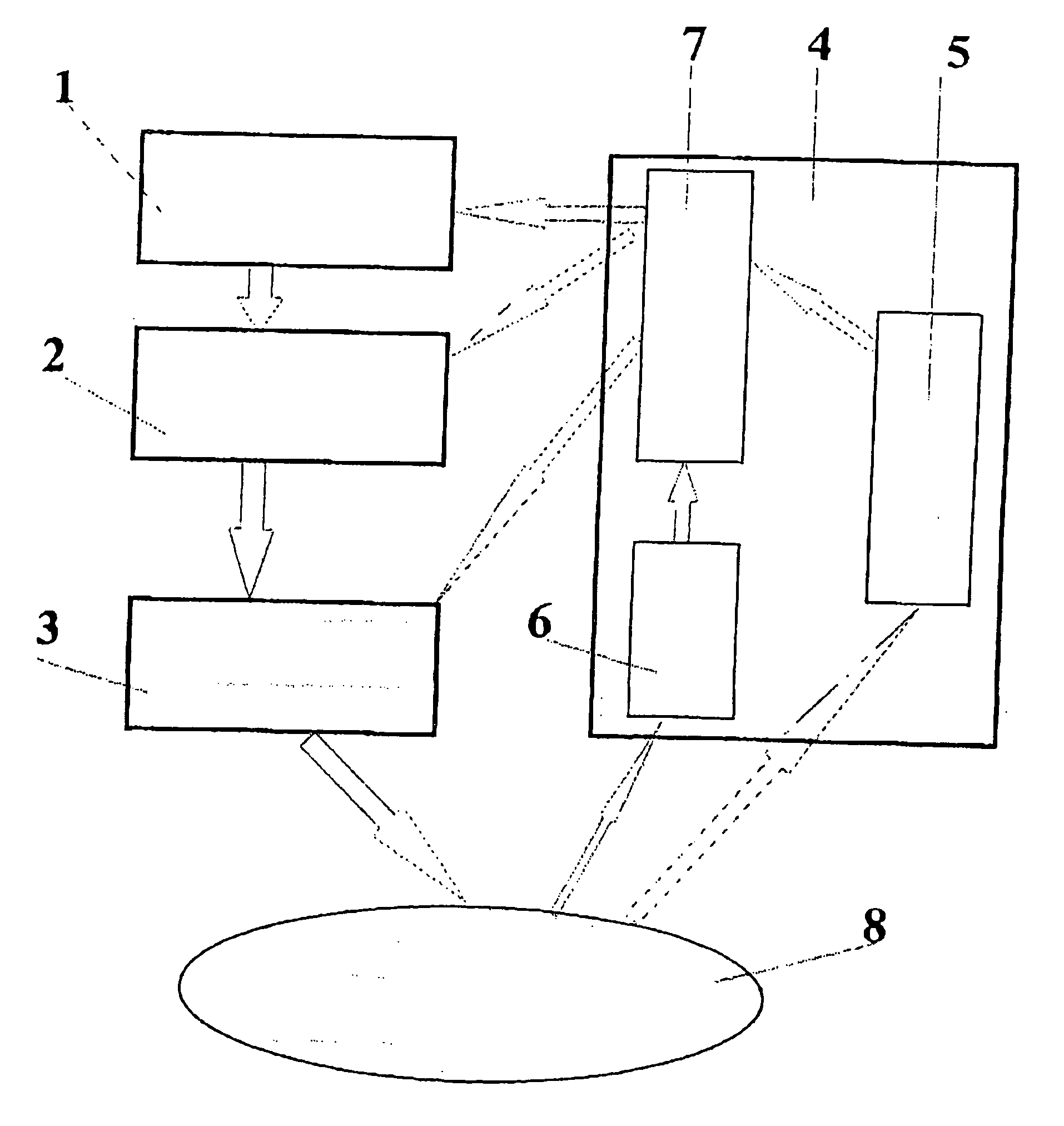Method and apparatus for opto-thermo-mechanical treatment of biological tissue
a biological tissue and opto-thermo-mechanical technology, applied in the field of medicine, can solve the problems of undesired effects, denaturation and destruction of local thermal and mechanical methods, and no method has been developed so far for controlling local thermal and mechanical, so as to reduce or completely eliminate the probability of complications and undesirable side effects, and eliminate undesirable effects on surrounding tissue.
- Summary
- Abstract
- Description
- Claims
- Application Information
AI Technical Summary
Benefits of technology
Problems solved by technology
Method used
Image
Examples
example 1
[0095] A 49-year old man applied to the clinic with complaints of pain in the lumbar spine after a year of intervertebral disk herniotomy. Preoperative examination, including computer tomography and discography, revealed spine instability and defect of fibrous ring of the operated intervertebral disk.
[0096] To treat the pathology, the defect topology and dimensions were first determined, and distribution of mechanical stresses in the fibrous ring area was defined by a microtensometer introduced into the intervertebral disk through a needle of 1.6 mm diameter. The laser radiation source was Er-glass fiber laser emitting at 1.56 μm wavelength with radiation power between 0.2 and 5 W, radiation modulation frequency in the range of from 1 to 80 Hz and percentage from 50 to 100%. Based on preoperative examination, the following laser radiation initial parameters were chosen: laser source power 0.9 W; modulation frequency 5 Hz, modulation percentage 80%. Local anesthesia by Novocain inje...
example 2
[0098] A 55-year-old woman applied to the clinic for the reason of aesthetic defect of the shape of nose. Preoperational examination by a visualization and display device including endoscope and optical coherent tomograph showed bend of cartilage plates of the nose halves without nasal bone disorders.
[0099] A laser radiation source was Nd:YAG solid-state pulse-periodic laser emitting at 1.32 μm wavelength with average radiation power from 0.3 to 5 W, pulse duration 1 ms, pulse repetition rate from 10 to 700 Hz. A radiation spatial distribution unit provided radiation focusing in the form of four round spots 0.4 to 3 mm in diameter, spaced at 0.5 to 10 mm, and scanning the radiation along three coordinates with a velocity from 0.1 to 20 cm / s.
[0100] Used as feedback was a scattered light phase obtained by exposing the nose halves to a supplementary low-intensity light source—0.68 μm diode laser, and a signal of microthermocouple. Two symmetrical cartilages of nose halves were given ...
example 3
[0101] A 13-years old boy applied to the clinic with complaints of a difficulty in nasal respiration. Preoperative examination by both an endoscope imaging system and an optical coherent tomograph showed the bend in the nasal septum cartilage section associated with nasal trauma, without pathological deformation of bone tissue.
[0102] A laser radiation source was Er-glass fiber laser emitting at 1.56 μm wavelength with radiation power from 0.2 to 5 W, initial radiation modulation with frequency 365 Hz and percentage 30%.
[0103] A control-diagnostic system comprising an opto-acoustic sensor and a microtensometer was used. The laser source was switched on at a reduced power level of 0.1 W, and a spot of 1 mm diameter linearly scanned the target cartilage tissue area with 0.1 Hz frequency and 5 cm amplitude; spatial distribution of opto-acoustic signal amplitude was measured so that a data processing device (reference numeral 7 at FIG. 1) could select initial laser power spatial distri...
PUM
 Login to View More
Login to View More Abstract
Description
Claims
Application Information
 Login to View More
Login to View More - R&D
- Intellectual Property
- Life Sciences
- Materials
- Tech Scout
- Unparalleled Data Quality
- Higher Quality Content
- 60% Fewer Hallucinations
Browse by: Latest US Patents, China's latest patents, Technical Efficacy Thesaurus, Application Domain, Technology Topic, Popular Technical Reports.
© 2025 PatSnap. All rights reserved.Legal|Privacy policy|Modern Slavery Act Transparency Statement|Sitemap|About US| Contact US: help@patsnap.com


